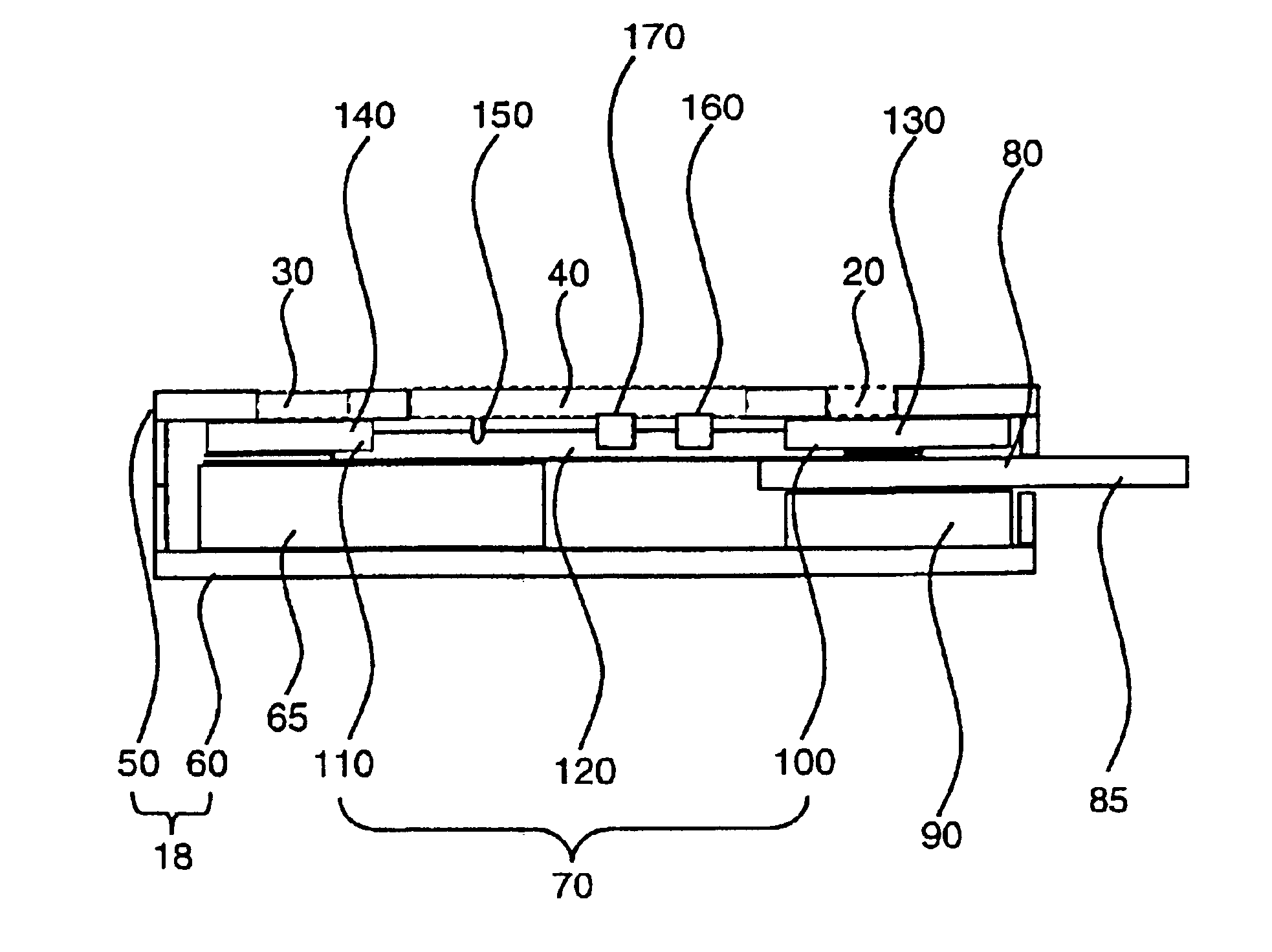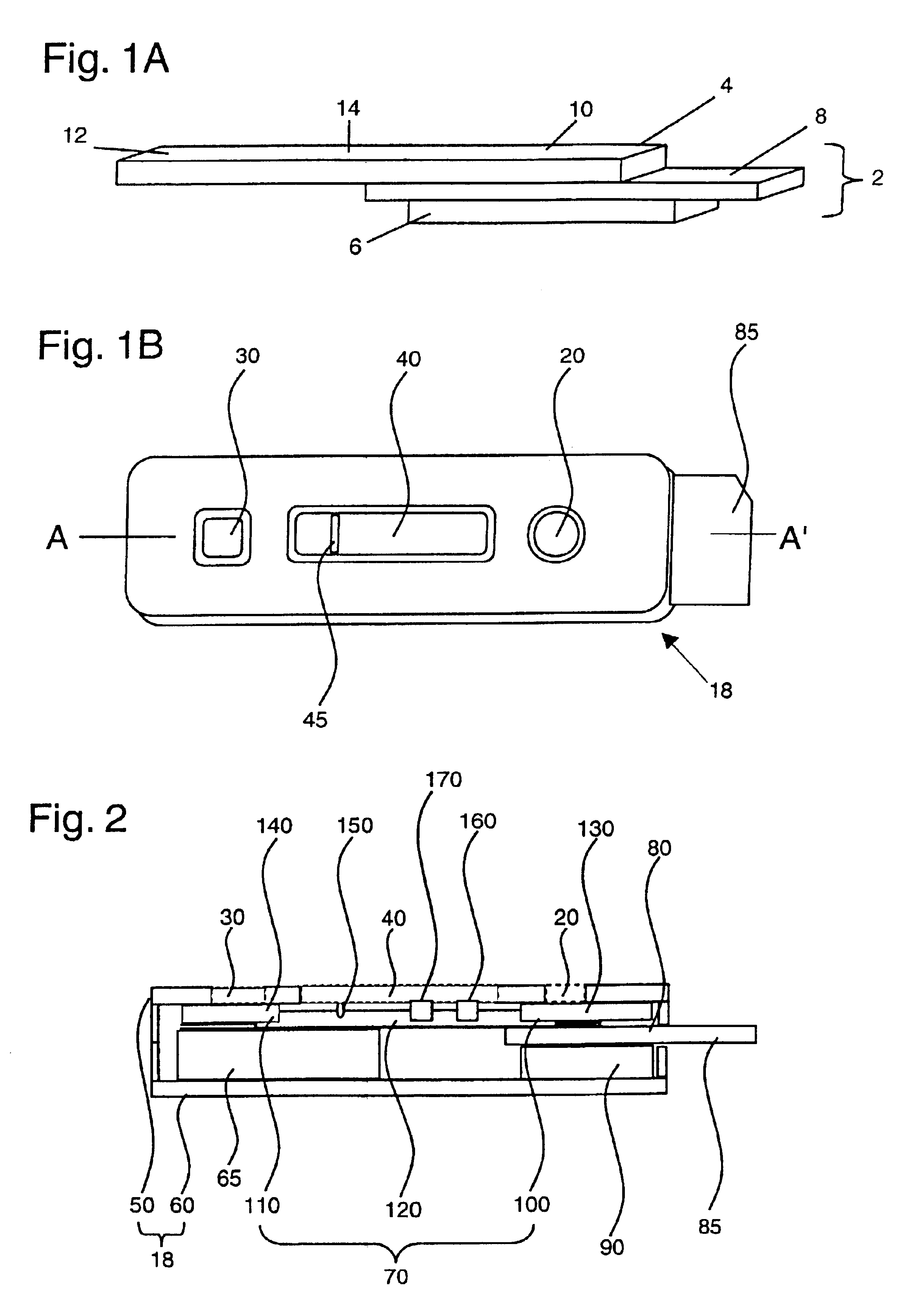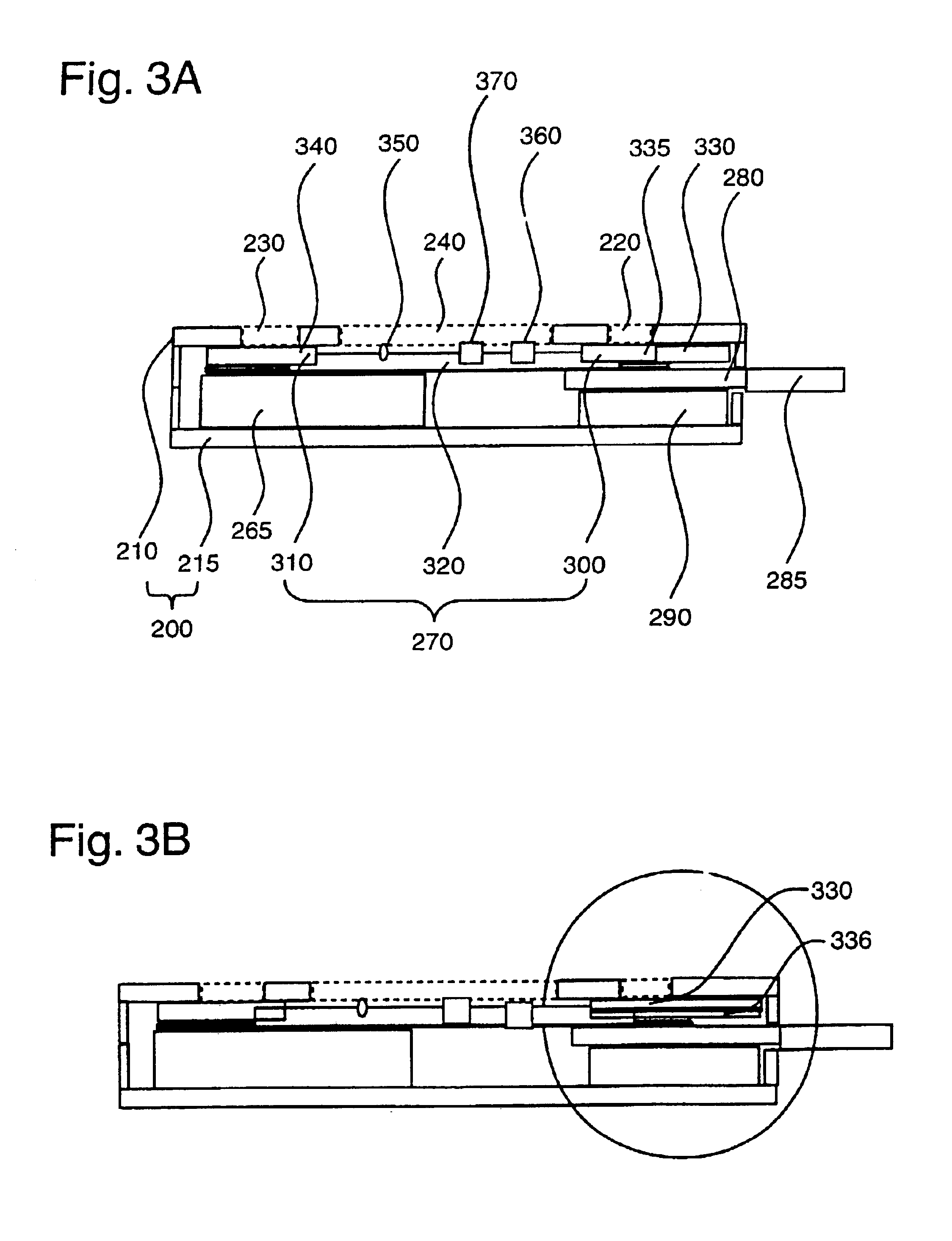Assay devices and methods of analyte detection
analyte detection and assay device technology, applied in the direction of biomass after-treatment, analysis using chemical indicators, instruments, etc., can solve the problems of short time, practical limitations of the use of assay devices, and the sensitivity of such devices is often questioned, so as to improve the sensitivity of the assay, and improve the titration end-point activity
- Summary
- Abstract
- Description
- Claims
- Application Information
AI Technical Summary
Benefits of technology
Problems solved by technology
Method used
Image
Examples
example 1
[0078]Assay devices for the detection of human antibodies to HIV types 1 and 2 were prepared as follows. Recombinant HIV 1 antigens p24 and gp41, and recombinant HIV 2 antigen gp36, were immobilized, or “slotted,” at a concentration range of about 0.08 to about 0.3 mg / ml onto a nitrocellulose membrane of 8 μm average pore size (Whatman, Ann Arbor, Mich.) using an IVEK (IVEK Corporation, N. Springfield, Vt.) Multispense 2000 striping machine. Protein A was immobilized in the same manner for use as an assay control line. The membrane was dried for approximately 10 minutes before addition of a blocking buffer (Milli-Q purified water with 0.3% casein and 0.25% sucrose). The membrane was exposed to the blocking buffer for approximately 1 minute, after which the membrane was dried at 37° C. for another 15 minutes. The membrane was finally affixed to a membrane backing (Adhesives Research Inc., Glen Rock, Pa.).
[0079]A reagent-bearing pad was prepared using a porous matrix (Hollingsworth & ...
example 2
[0083]Assay devices for the detection of human antibodies to Helicobacter pylori were prepared in a manner similar to that described in Example 1. Briefly, a nitrocellulose membrane of 81 μm average pore size was slotted with one or more native or recombinant antigens of H. pylori at a concentration of approximately 0.6 mg / ml using the IVEK striping machine. Exemplary recombinant antigens include, but are not limited to, the H. pylori antigens described in WO98 / 49314. The membrane was dried for 10 minutes before blocking with a blocking buffer (Milli-Q purified water with 0.3% casein and 0.25% sucrose) for 1 minute. The blocked membrane was then dried at 37° C. for another 15 minutes before being affixed to a membrane backing. A reagent-bearing pad was prepared using a porous matrix and sprayed with goat anti-human IgG antibodies that were labeled with colloidal gold particles of approximately 40 nm. The reagent-bearing pad was also dried at 37° C. for 30 minutes prior to use. The c...
example 3
[0087]An experiment was also performed with the H. pylori assay device as prepared in Example 2 using saliva samples instead of serum samples. Saliva samples from a healthy individual and an H. pylori infected individual, as confirmed by a Western blot test, were collected and diluted 1:5 in phosphate buffer saline (0.01M, pH 7.4). The samples were centrifuged for 5 minutes at 12,000 rpm and then stored in a freezer at −20° C. before use. Approximately 30 μl of each sample was applied to separate assay devices and tested according to the assay procedure described in Example 2. As a negative control, an assay using only phosphate buffer saline (0.01M, pH 7.4) was included in the experiment. The saliva sample from the infected individual produced a defined control band as well as an infection-indicating band with intensity in the range of 1+ to 2+. Neither the saliva sample from the healthy individual nor the PBS experiment control gave rise to an infection-indicating band. The saliva...
PUM
| Property | Measurement | Unit |
|---|---|---|
| volumes | aaaaa | aaaaa |
| volumes | aaaaa | aaaaa |
| volumes | aaaaa | aaaaa |
Abstract
Description
Claims
Application Information
 Login to View More
Login to View More - R&D
- Intellectual Property
- Life Sciences
- Materials
- Tech Scout
- Unparalleled Data Quality
- Higher Quality Content
- 60% Fewer Hallucinations
Browse by: Latest US Patents, China's latest patents, Technical Efficacy Thesaurus, Application Domain, Technology Topic, Popular Technical Reports.
© 2025 PatSnap. All rights reserved.Legal|Privacy policy|Modern Slavery Act Transparency Statement|Sitemap|About US| Contact US: help@patsnap.com



